The explicit teaching of digraphs plays a crucial role in helping students decode words. If you’re asking yourself, “What are digraphs?” you’ve come to the right place. In this blog post, you’ll learn what digraphs are, and when to introduce them to young readers. I’ll also share valuable tips for how to teach digraphs as well as where to get engaging digraph activities.

What Are Digraphs?
A digraph is a fancy word for a combination of two letters that come together to represent a single sound. Unlike a blend, where each letter retains its individual sound, a digraph merges two letters to create a new phoneme. Common digraphs include:
- ch
- sh
- ph
- th
- wh

Lesson slides for teaching digraphs
When Should I Teach Digraphs?
Digraph instruction typically fits into the phonics curriculum after students have mastered individual consonants and short vowel sounds. It’s usually introduced in early elementary grades (1st and 2nd grade).
Tips for Teaching Digraphs to Elementary Students:
- Visual Aids: Use colorful visuals and posters to display each digraph along with relevant images. This aids memory retention and helps children associate sounds with letters.
- Multisensory Learning: Incorporate activities that engage multiple senses, such as drawing the digraph in sand, making it with play dough, or tracing it in the air while saying the sound aloud. This is great for making phonics instruction more fun as well!
- Explicit Phonemic Awareness: Begin by helping students identify the digraph sound in various words. Encourage them to listen carefully to the sound within words.
Same Sound digraphs phonics center
- Isolation Practice: Have students practice identifying digraphs within a list of words. This helps them isolate the sound and recognize it consistently.
- Word Building: Provide letter cards or magnetic letters and encourage students to build words that contain the target digraph. This hands-on approach reinforces the connection between letters and sounds.
- Word Sorts: Create word sorting activities where students categorize words into groups based on their digraphs. This strengthens their ability to identify patterns.
- Read-Alouds: Choose books that prominently feature digraphs. Pause during reading to point out and discuss words containing digraphs.

- Interactive Games: Incorporate digital or physical games like Bingo, memory matching, or scavenger hunts that involve identifying and using digraphs. You’ll find more specific game ideas below!
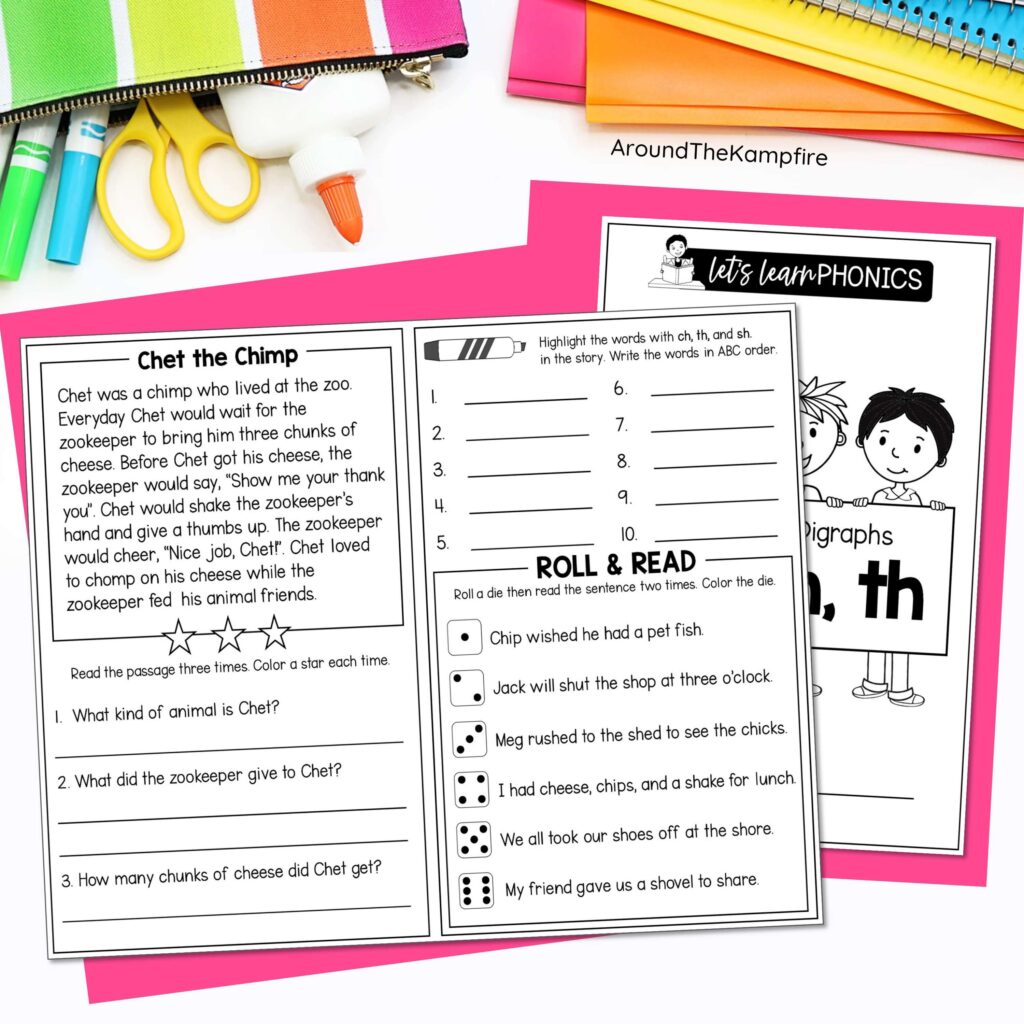
What Activities Help Teach Digraphs?
- Digraph Hunt: Provide magazines or printed materials and have students search for words with specific digraphs. Cut out the words and create a digraph collage.
- Digraph Puzzles: Create puzzles where one piece has a digraph and the other piece has a word containing that digraph. Students match the pieces to complete the puzzle.
- Picture-Word Match: Display images representing words with digraphs. Have students match the pictures to the correct words.

Digraphs phonics center activity
- Digraph Charades: Write words with digraphs on index cards. One student draws a card and acts out the word while others guess.
- Digraph Bingo: Prepare Bingo cards with words containing different digraphs. Call out digraph sounds, and students mark the corresponding words.
- Interactive Digital Tools: Utilize phonics apps or online games that focus on digraph recognition and usage.
Read Alouds to Help Teach Digraphs to Elementary Students
by Julia Durango
This picture book introduces digraphs through a fun and rhythmic story about a group of chimpanzees who love to dance. The repeated “ch” sound in words like “Cha-Cha” and “chimps” helps young readers recognize and practice the “ch” digraph, making it an enjoyable and memorable learning experience.
Smash! Mash! Crash! There Goes The Trash!
by Barbara Odanaka
In this book, children follow a garbage truck’s adventures as it collects trash with plenty of “sh” digraph words along the way. Through onomatopoeic language and colorful illustrations, students can identify and reinforce their understanding of this digraph.
by Dr. Seuss
Dr. Seuss’s whimsical and imaginative storytelling introduces digraph “th” as part of a broader lesson of creative thinking. The playful language and clever rhymes make it a fun way for young readers to encounter and remember these digraphs. Who doesn’t love a fun tongue twister read aloud?
by Lisa Mantchev
This is a heartwarming story about friendship and inclusion that just so happens to use the “ph” digraph in the word “elephants.” It helps students practice this digraph while also learning important lessons about acceptance and empathy. It’s a win-win!
by Ashley Spires
While not primarily focused on digraphs, this book encourages problem-solving and perseverance. It can be used to spark discussions and activities related to words with “th,” “sh,” and “ch” digraphs that may appear in the context of inventions and creativity.
The Pout-Pout Fish and the Worry-Worry Whale
by Deborah Diesen
This is another great social-emotional book that can be used to show the “wh” digraph in action. Students can practice recognizing and pronouncing the “wh” digraph while engaging with the characters and their emotions in the story.
Videos and Songs to Help Teach Digraphs
I love incorporating videos and songs into my instruction. They are not only fun for your students (and you!), they can also aid in memorization, help keep your students engaged, and tap into different learning styles.
Here are some fun songs to play when teachind digraphs:
- Digraphs- Jack Hartman
- Digraphs- Rock N Learn Phonics
- Learn About Digraphs with Cars and Monster Trucks
Digraphs Activities and Lesson Plans
I’ve created a complete Beginning and Ending Digraph Unit that combines the above teaching strategies with engaging digraphs activities to best teach them to your students. I have included a mixture of whole group lessons, an interactive PowerPoint, center activities, digraph worksheets, interventions, assessments, and even printable manipulatives to use. This complete resource includes everything you need for teaching digraphs.
Inside the unit you will find…
- Daily minilessons in a weekly phonics routine
- An instructional PowerPoint + Google Slides version with daily lesson slides and interactive practice activities for teaching digraphs
- 12 Initial & final digraphs posters with beginning and ending ch, sh, th, wh
- 12 Word work centers with interchangeable parts for flexible ways to practice & play
- 4 Activity booklets with phonics stories, questions, reading and writing
- 4 Decodable reading passages with comprehension questions
- Word cards & picture cards
- Digraphs large size display cards
- Student letter manipulatives
- Word-building mats for use with magnetic letters
- 16 Decodable word lists
- Pocket chart headers & picture cards
- 9 Digraphs practice worksheets for beginning & ending consonant digraphs
Beginning and Ending Digraph Unit FAQs
- What grades is this unit for? 1st and 2nd
- What digraphs are covered? ch, th, sh, and wh.
- Is this just for whole-group instruction? This resource includes enough materials for your whole group mini-lessons, small group instruction, skill groups, phonics intervention, and phonics centers, and even includes practice worksheets for morning work, review, or homework.
- Do you have other units available for other Phonics concepts? Yes! Check out my other Phonics units and bundles here!
If you’ve found this post helpful, please share it on Pinterest and Facebook!
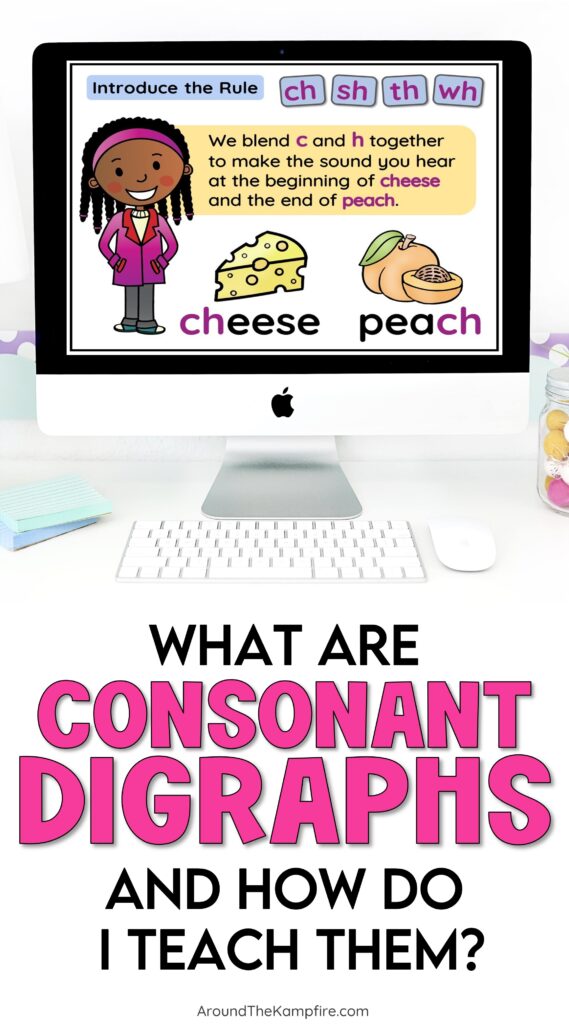
Visit these posts for more phonics teaching ideas and classroom management strategies!
How to Increase Student Independence During Center Time

How to Start Centers at the Beginning of the Year

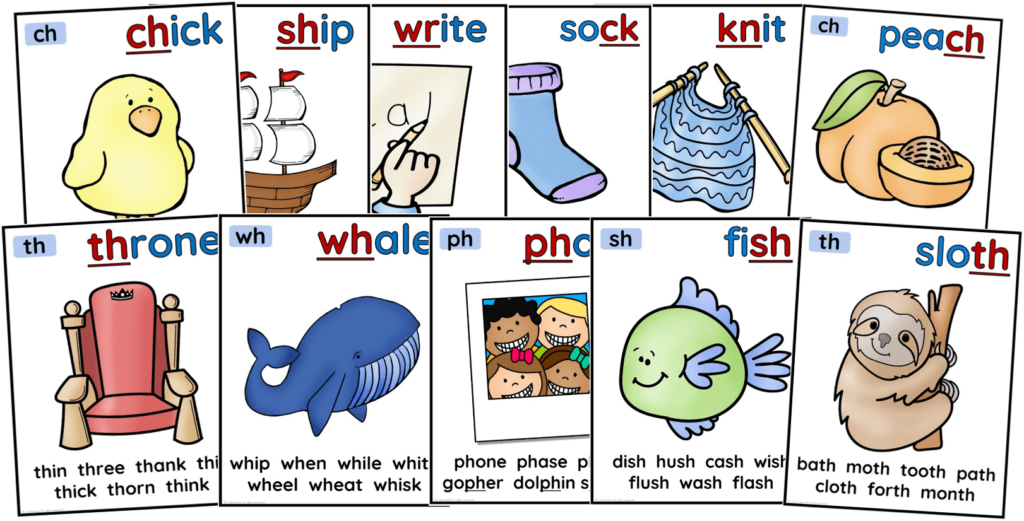
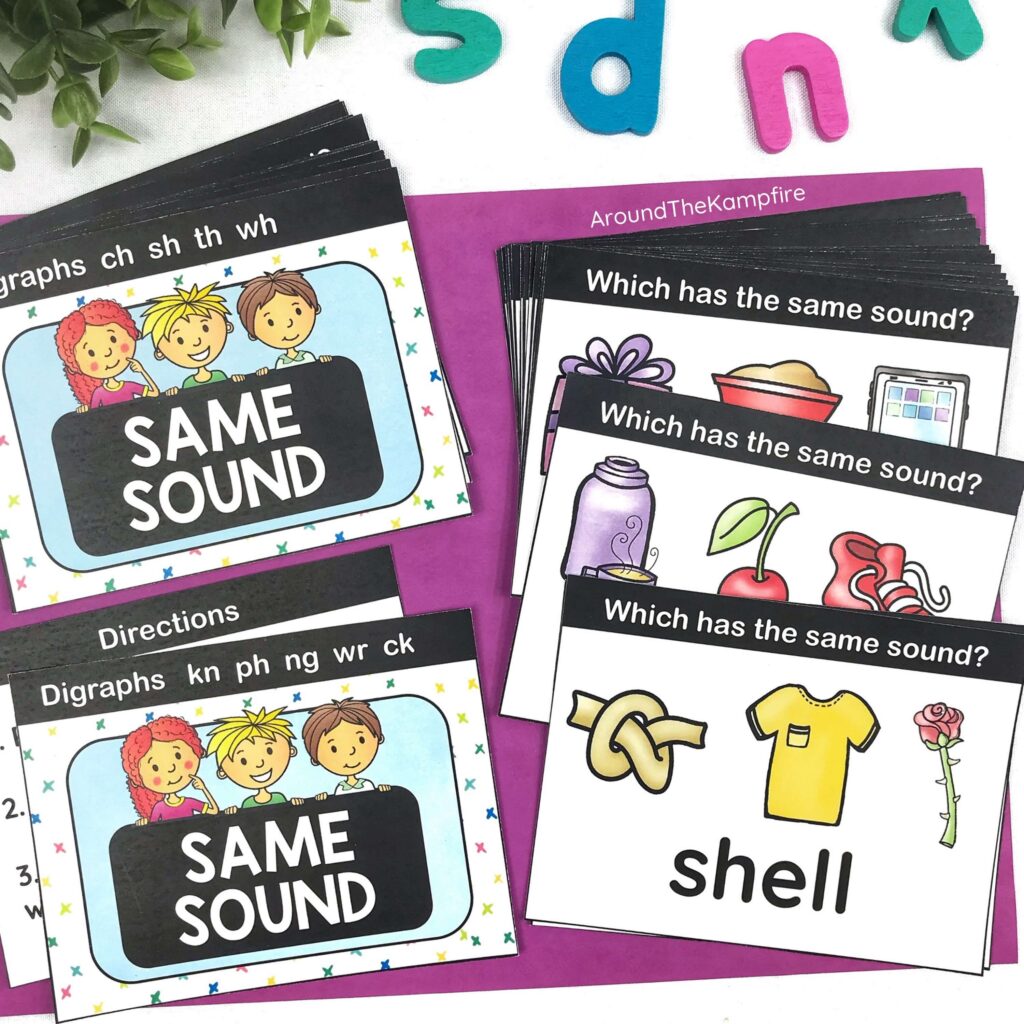



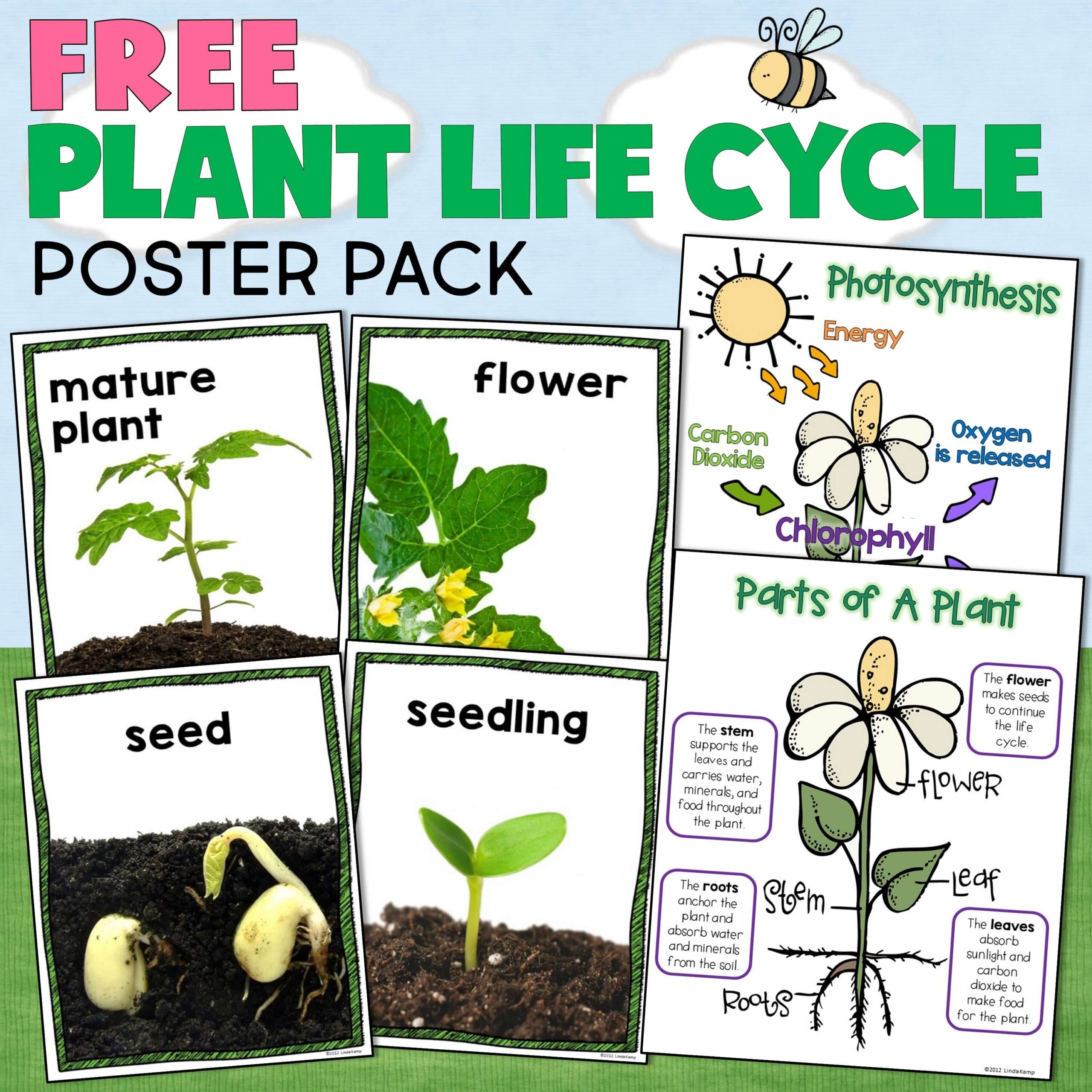




Leave a Comment